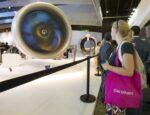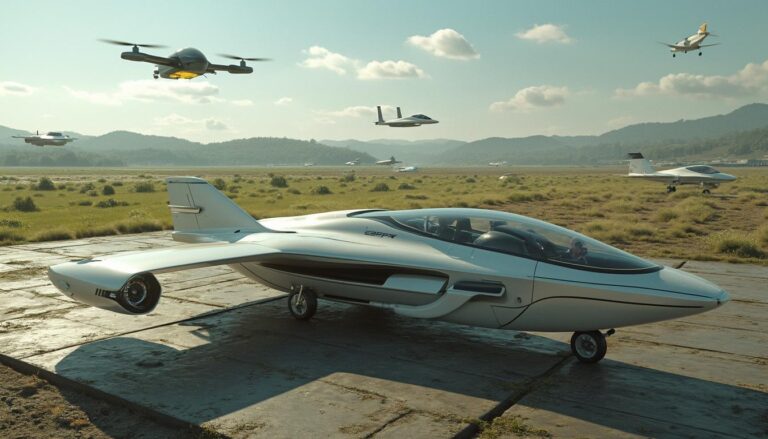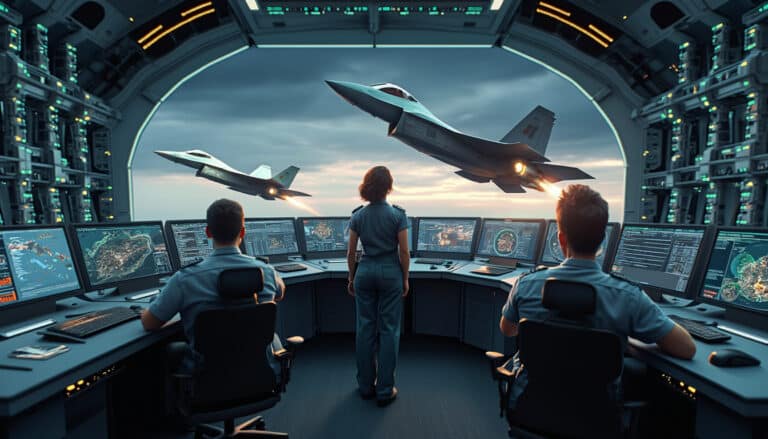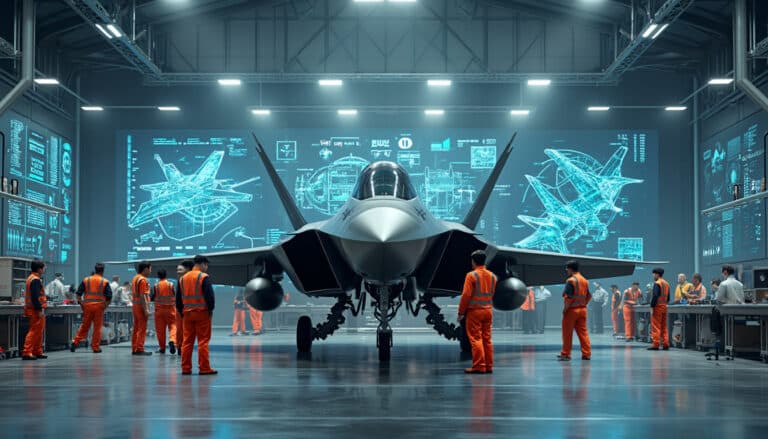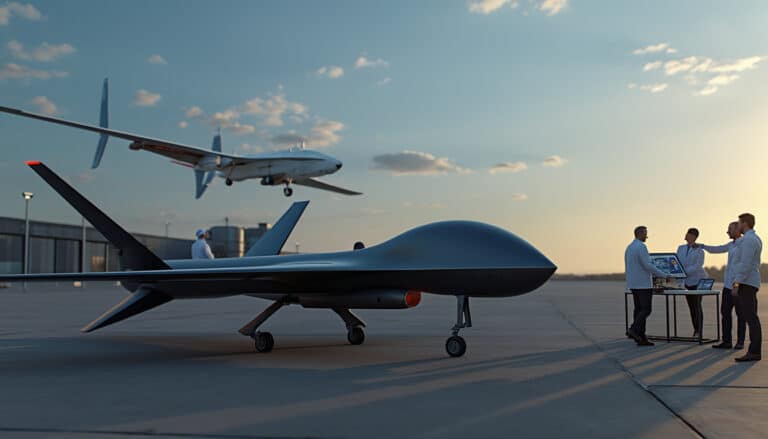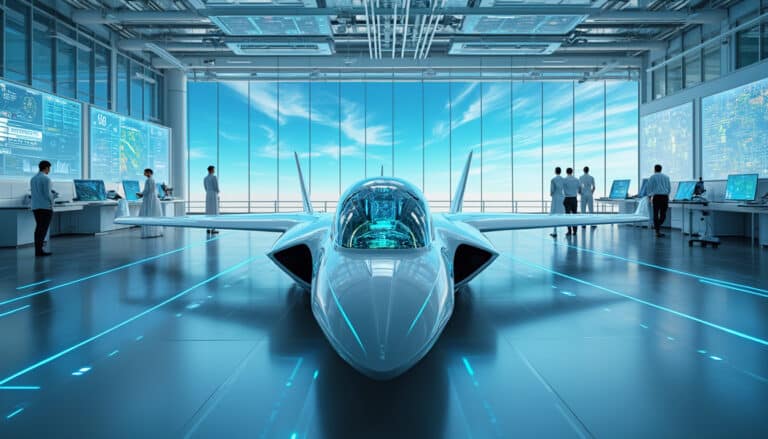Aviation is on the cusp of an unprecedented revolution, with technological innovations redefining our understanding of aircraft. The machines of the future will not be limited to incremental improvements; they will integrate innovative concepts such as electric propulsion, artificial intelligence and advanced materials to optimize safety, energy efficiency and comfort. How will these advances impact the flight experience, environmental sustainability and safety standards? Exploring the secrets of the planes of the future means diving into a world where technology is transforming not only the way we travel, but also our relationship with airspace and the planet.
Table des matières
ToggleTechnological innovation in aviation
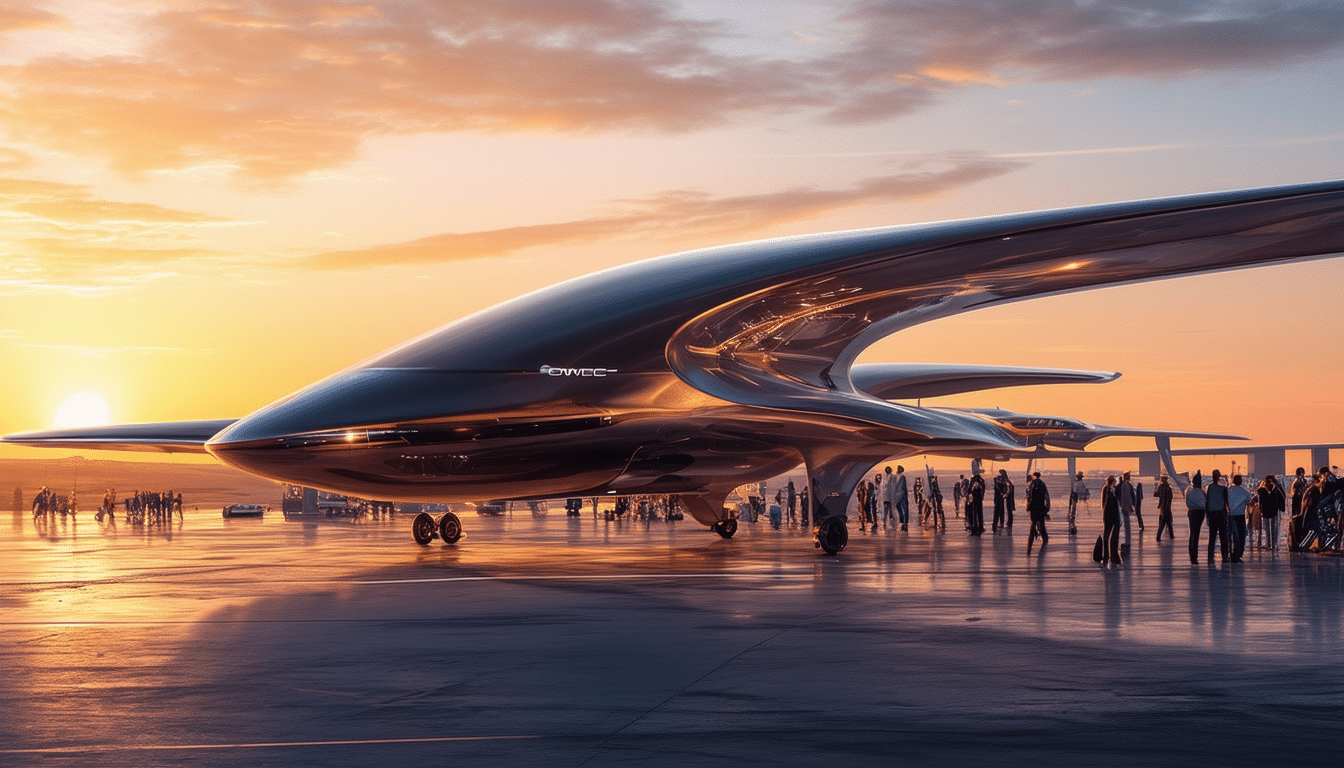
Aviation is constantly evolving thanks totechnological innovation. Advances in various areas are redefining the standards of aircraft safety, efficiency and comfort. New technologies are emerging in several key segments of the aviation industry, including materials, propulsion systems, and automation.
Among the most notable innovations, we note the emergence of composite materials which facilitate the reduction of the weight of aircraft, thus leading to a reduction in fuel consumption. These materials, such as reinforced carbon, offer exceptional robustness while lightening the structure of the aircraft.
Propulsion is also changing. Hybrid and electric motors are gaining ground, promising a significant reduction in CO2 emissions. These technologies aim to meet increasing requirements for sustainability and environmental protection, while maintaining high operational efficiency.
Another crucial facet oftechnological innovation in aviation is about automation and artificial intelligence (AI). These tools are integrated to improve in-flight decision-making and enhance safety. For example, AI-based flight management systems can detect anomalies and anticipate potential problems, ensuring an increased level of vigilance.
The control interfaces are also undergoing a radical transformation. Head-up displays (HUDs) and advanced avionics systems allow pilots to access critical information without diverting their attention. This promotes better ergonomics and optimal responsiveness.
Security challenges remain a major concern. The integration of new technologies must be accompanied by increased vigilance in the face of cyber threats. It is therefore essential to develop robust security systems to protect data and ensure the user security.
In addition, in-flight connectivity is expanding, improving the passenger experience. The aircraft of the future will be equipped with advanced communications technology, providing high-speed Internet access to passengers, thus promoting an optimal work and leisure environment.
Ultimately, the planes of tomorrow will have to combine innovation, sustainability And security. Industry players must remain proactive in adopting new technological solutions to meet contemporary challenges as well as those of tomorrow.
Advances in materials
Modern aviation is in the midst of a revolution thanks to technological innovations that are transforming the way aircraft are designed and used. These advances aim not only to improve the security, but also to increase energy efficiency and reduce environmental impact. Aircraft manufacturers are moving towards solutions that meet the growing demands of passengers and international regulations.
One of the major axes of this transformation lies in the materials used for the construction of aircraft. Advances in compound materials will make it possible to design lighter and more robust aircraft. By opting for materials such as carbon fiber and the advanced metal alloys, engineers can reduce the weight of aircraft structures, which has a direct impact on fuel consumption and operating costs.
Among the innovative materials, we can note:
- Composite materials : offering increased resistance while being lightweight.
- Titanium-based alloys : resistant to corrosion and high temperatures.
- Smart materials : able to adapt to environmental conditions.
Furthermore, research on nanomaterials pave the way for futuristic applications, where material properties can be modified at the atomic scale. This opens up exciting perspectives for creating even more efficient and sustainable structures.
At the same time, the modularity of systems becomes a priority. THE modular systems enable easier maintenance and technology updates, while ensuring that advances are effectively integrated into existing platforms. This contributes to the economic sustainability and operational aspects of air fleets.
These innovations in materials and integrated design, coupled with strict regulations that push for environmental performance, are shaping the future of the aircraft that will circulate in our skies. The aviation of the future will therefore be marked by a relentless quest for excellence and innovation, to respond to contemporary challenges while respecting our resources.
Revolutionary propulsion systems
Propulsion systems aircraft of the future will experience a real revolution thanks to major technological innovations. The transition from traditional jet engines to more ecological and efficient systems will be at the heart of future developments.
THE electric propulsion systems are among the main advances envisaged. The use of ultra-clean batteries and electric motors will not only reduce greenhouse gas emissions, but also reduce the noise generated by aircraft. Projects such as those of startups like Joby Aviation and giants like Boeing are already exploring these promising avenues.
Another notable innovation lies in the development of hybrid systems. These systems combine electric motors and combustion engines, thus optimizing fuel consumption during critical phases of flight. This approach could transform short journeys, making regional flights more energy efficient.
Furthermore, the use of alternative fuels, such as biofuels and synthetic fuels, is a seriously studied avenue to reduce the carbon footprint of aircraft. These fuels, which can be produced from renewable resources, will provide an essential transition to more sustainable aviation.
Another important dimension of innovation in air propulsion is research into hydrogen engines. This mode of propulsion, based on the conversion of hydrogen into electricity, could not only eliminate CO2 emissions, but also considerably reduce other atmospheric pollutants.
Finally, it should be noted that the digitization flight control systems, integrating artificial intelligence, promise to optimize propulsion management. These technologies will enable aircraft to adapt their energy consumption based on real-time flight conditions, promoting improved efficiency.
The environmental impact of future aircraft
L’environmental impact future aircraft is at the heart of the aeronautical industry’s concerns. Faced with climate challenges, players in the sector are moving towards innovative solutions to reduce their carbon footprint.
Technological advances aim to develop more eco-efficient aircraft. Here are some main areas of innovation:
- Use of alternative fuels, such as biofuels, to reduce greenhouse gas emissions.
- Improvedenergy efficiency thanks to optimized aerodynamics and lightweight materials.
- Integration of systems electric propulsion or hybrid, thereby reducing dependence on fossil fuels.
- Development of platforms smart navigation to optimize flight paths and minimize fuel consumption.
These innovations are also accompanied by increased attention to sustainability materials used in the manufacture of aircraft. Manufacturers are exploring options such as recycling parts and using bio-sourced materials.
Furthermore, the environmental regulations are becoming increasingly strict, pushing manufacturers to comply with demanding standards to reduce their emissions. Adopting standards like those established by the International Civil Aviation Organization (ICAO) will be essential for the future of aviation.
Finally, consumer awareness and education on responsible air travel choices will play a key role in the future of air travel. By integrating these elements into their strategy, airlines will be able to actively contribute to a shift towards a more environmentally friendly aeronautical sector.
Reduction of carbon emissions
Future aircraft are undergoing rapid change, particularly in terms of environmental impact. Aviation is one of the most polluting sectors, but recent innovations promise to significantly reduce greenhouse gas emissions.
There reduction of carbon emissions is a major challenge for the aeronautical industry. Several technologies are emerging to meet this need and transform the way we travel through the air.
- Alternative fuels : Biofuels, as well as synthetic fuels, are under development. These solutions can reduce the carbon footprint of aircraft, allowing the same engine to be used while polluting less.
- Electric aircraft : The advent of electricity in aviation is promising. Electric aircraft models, although still in the testing phase, offer a zero-emission alternative for short journeys.
- Fuselage technologies : The planes of tomorrow will also be designed with lighter materials and optimized aerodynamics. This will reduce fuel consumption, thereby improving energy efficiency.
- Intelligent Flight Management Systems : These systems use advanced algorithms to optimize flight paths, unnecessarily reducing distances traveled and minimizing fuel consumption.
These advances demonstrate the aviation industry’s commitment to tackling surrounding challenges, while providing a more sustainable and environmentally friendly flight experience.
New sustainability standards
Environmental issues are at the heart of modern aviation concerns. THE planes of the future will have to respond to these challenges by adopting more sustainable and environmentally friendly practices.
THE new sustainability standards impose strict requirements regarding greenhouse gas emissions and fuel consumption. Aircraft manufacturers are investing heavily in research and development of technologies aimed at reducing the carbon footprint of their aircraft.
Notable innovations include:
- Biofuels : The integration of alternative and sustainable fuels to reduce dependence on fossil fuels.
- Aerodynamic design : The evolution of aircraft shapes to maximize fuel efficiency and reduce drag.
- Hybrid technologies : The development of propulsion systems combining electric motors and combustion engines, allowing a significant reduction in emissions.
To comply with societal and regulatory expectations, aviation industries are committing to ambitious targets, such as carbon neutrality by 2050. This requires close collaboration between governments, manufacturers and airlines.
The implementation of these standards will be closely monitored by regulatory bodies, ensuring that technological innovation goes hand in hand with increased environmental responsibility. This is essential to ensure the long-term sustainability of aviation while preserving our planet.
Through these initiatives, the aircraft of the future will not only be more efficient, but also vectors of sustainability and of ecological responsibility.









